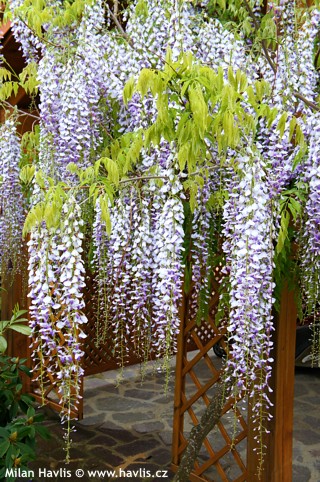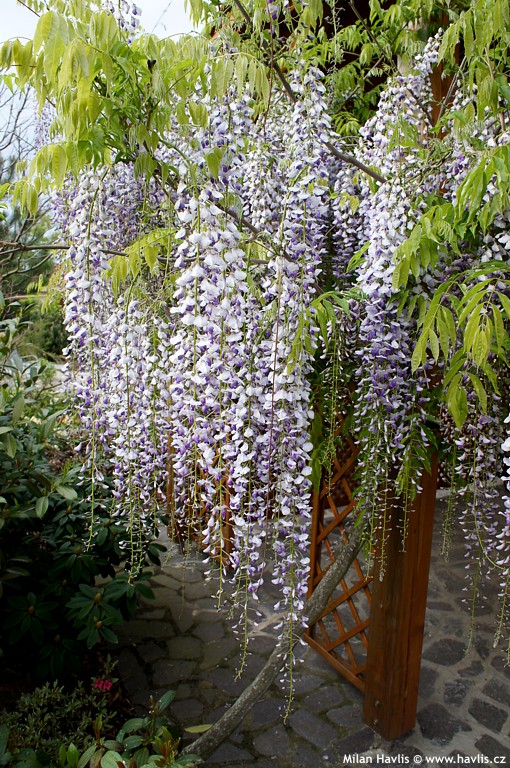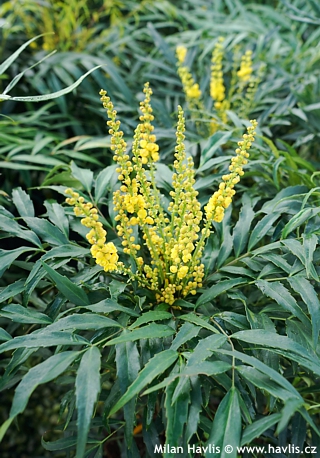Wisteria floribunda (syn. 'Macrobotrys', 'Naga Noda') 'MULTIJUGA' Japanese wisteria
size/type
vine,vine
usual height
3-10m
leaves
deciduous broadleaf
colour of leaves
flowers
showy
colour of flowers
blooming time
May-May
location
full sun
USDA zone (lowest)
5 (down to -29°C)
winter protection
for zone 5+6

for zone 7

categorized
Description of the plant:
I believe that this Japanese wisteria is something that not only collectors will be happy about. Have you ever seen a wisteria with racemes longer than 1 meter? And that is on the short side: there is a plant whose flower raceme was worth mentioning in the Guinness Book of Records thanks to 180 cm in length! That is a size of a supermodel! 😊Its name is Multijuga (formerly Macrobotrys) and usually makes 80-130 cm long racemes of light violet, pea-like flowers with a light-yellow blotch in the throat. The scent is sweet but not strong. Flowers appear on a partially or completely leaved plant. Being late in flowering it always escapes late frosts. Exotic-looking, compound leaves are deciduous, mid green, pinnate, and large.
Considering the size of its flower racemes, we suggest the following growing method: plant it at a beam, a post or against a fence and let it climb up at least 150 cm. Tie up its stem to the support but don’t let it wind around it. When it reaches this height remove all branches along the main stem and let it develop a crown or side branches only at the top. If grown against a fence lead the lateral branches along the top of the fence. As a result, the flower buds will form at the top of the plant and newly produced racemes will never lie on the ground but will make a great display for every passer-by.
It likes acidic, reasonably fertile soil that is moist but well-drained. No fertilizing recommended. Abundant flowering can be achieved by regular pruning – cut back longest shoots several times a year. It needs full sun. Young plants with soft wood can be damaged by harsh winters. Fully hardy to about -29°C (USDA zone 5).
Last update 11-12-2008; 29-11-2010; 15-01-2021
QUICK PRICE OVERVIEW
CURRENTLY SOLD OUT


















